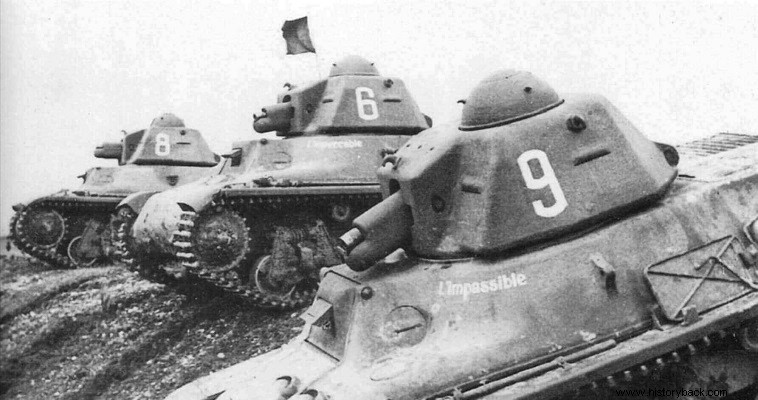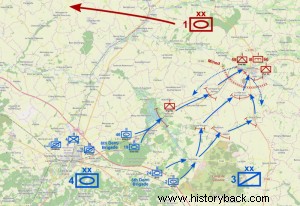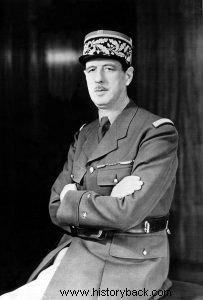
The Battle of Montcornet was a small-scale conflict by the standards of the gigantic carnage of World War II. What made it unique was the fact that it was the first successful counter-attack by French forces against the German invaders in that fateful May 1940, as well as the fact that the attack was led by a French pioneer of armored warfare, de Gaulle.
On May 10, 1940, the Germans launched their major offensive in the West. Within a few days they had almost crushed Holland and Belgium and split what was thought to be an unbroken French front. The German panzers were moving at maximum speed to encircle the northern allied armies.
The vanguard of the German attack was General Heinz Guderian's XIX Panzer Corps with the 1st, 2nd and 10th Panzer Divisions (MPa). Against the 1st BA, De Go was about to launch his counterattack l, who, with the rank of colonel, was placed in command of the newly formed 4th Armored Division (TTHM) , of a rather incomplete formation that had only 1/3 of the predicted forces.
The 4th TTHM had 85 tanks and 5,000 men. With this force de Gaulle was ordered to attack Montcornet, a road junction village through which the routes to Reims, Laon and St. Quentin passed and where a logistics base of the German 1st Army had been established.
De Gaulle arrived and assumed his duties as commander of the 4th TTHM on 13 May. The orders he received were to attack the village on May 17th to buy time for General Tucson's 6th Army to move and close the breach in the front at Sedan. Of course, all these were wishful thinking of the French Supreme Headquarters, which was unable to adapt to the German, "lightning", pace of operations.
De Gaulle, however, over the next three days managed to complete his division by including, sometimes by force, units retreating from the front. It was also reinforced with a "semi-brigade" (French euphemism for regiment) of tanks including some heavy (for the time) B1 bis. Reinforced in this way, he attacked on May 17.
At 04.14 in the morning De Gaulle's division started. The French attack started well with the Germans retreating. By midday the village was surrounded while the Germans tried in vain to destroy the French B1 bis with their 37 mm anti-tank guns. German Pz III tanks that tried to intervene had the same fate.
The Germans watched with horror as the small shells of their cannons ricocheted off the strong armor of the French tanks. The French tanks attacked a German supply convoy and completely destroyed it. The Germans, however, continued to fight with their well-known stubbornness, destroying 23 French tanks and armored vehicles of mainly light types. The great enemy of the French tanks, in this phase, proved to be the German mines and the Stukas that intervened. The next day the attack continued with the 4th TTHM being reinforced with two more regiments of motorized cavalry. He thus came to have 150 tanks and armored vehicles.
De Gaulle sent his infantry and cavalry to neutralize the German pockets at Sivre and Clermont-le-Ferme supported by D2 tanks. But the Germans also threw into the battle the famous 88 mm cannons. which could destroy all the French tanks. After a new intervention by the German air force, the attack ended and de Gaulle, instead of an advance to the death, preferred to withdraw his division before it suffered heavy losses.
The next day, May 19, he repeated the attack but now the Germans were not surprised and the Stukas bombarded without an opponent. Thus the attack was finally stopped. It was one of the few successful French attacks in 1940, but ultimately had no practical countermeasure.


